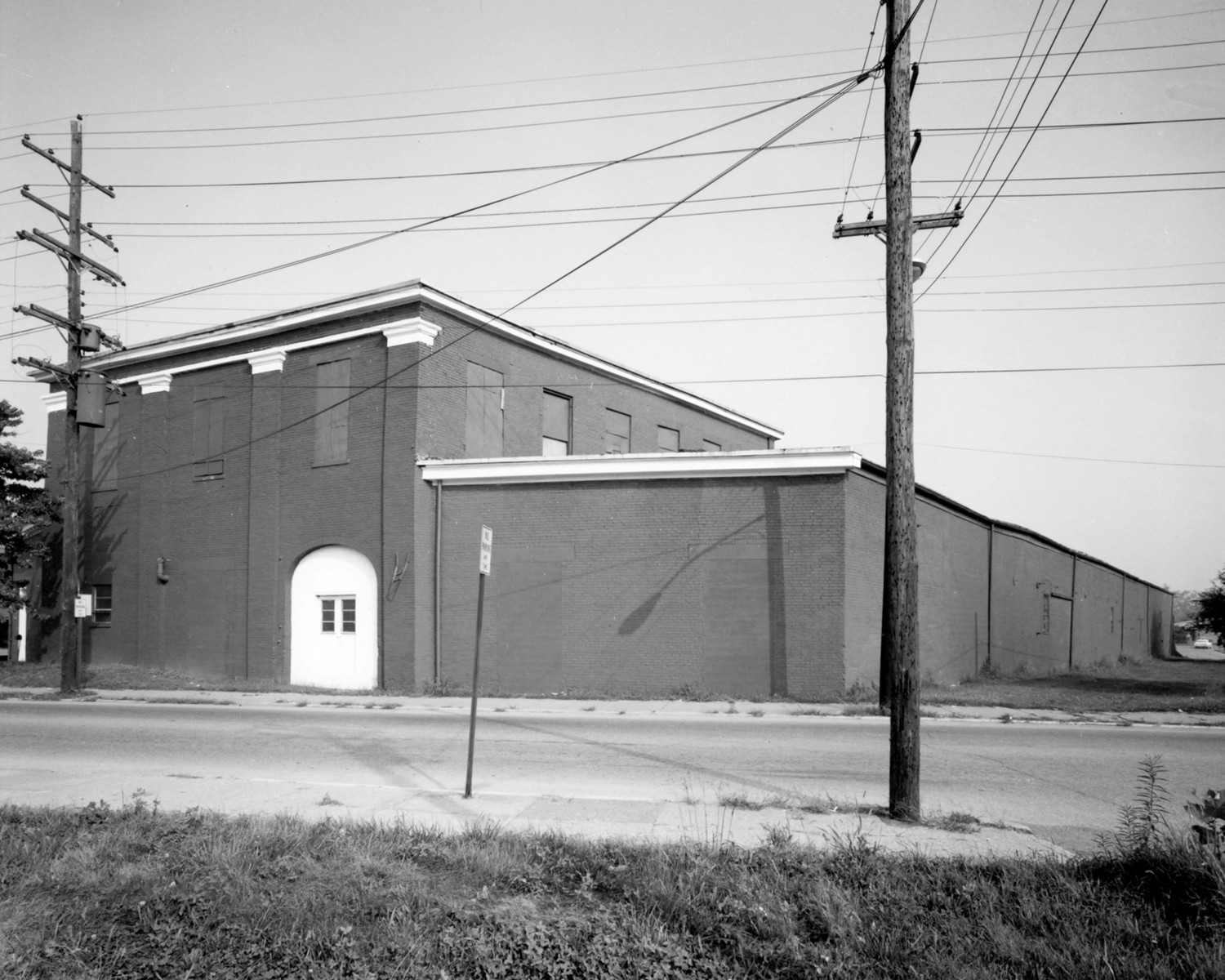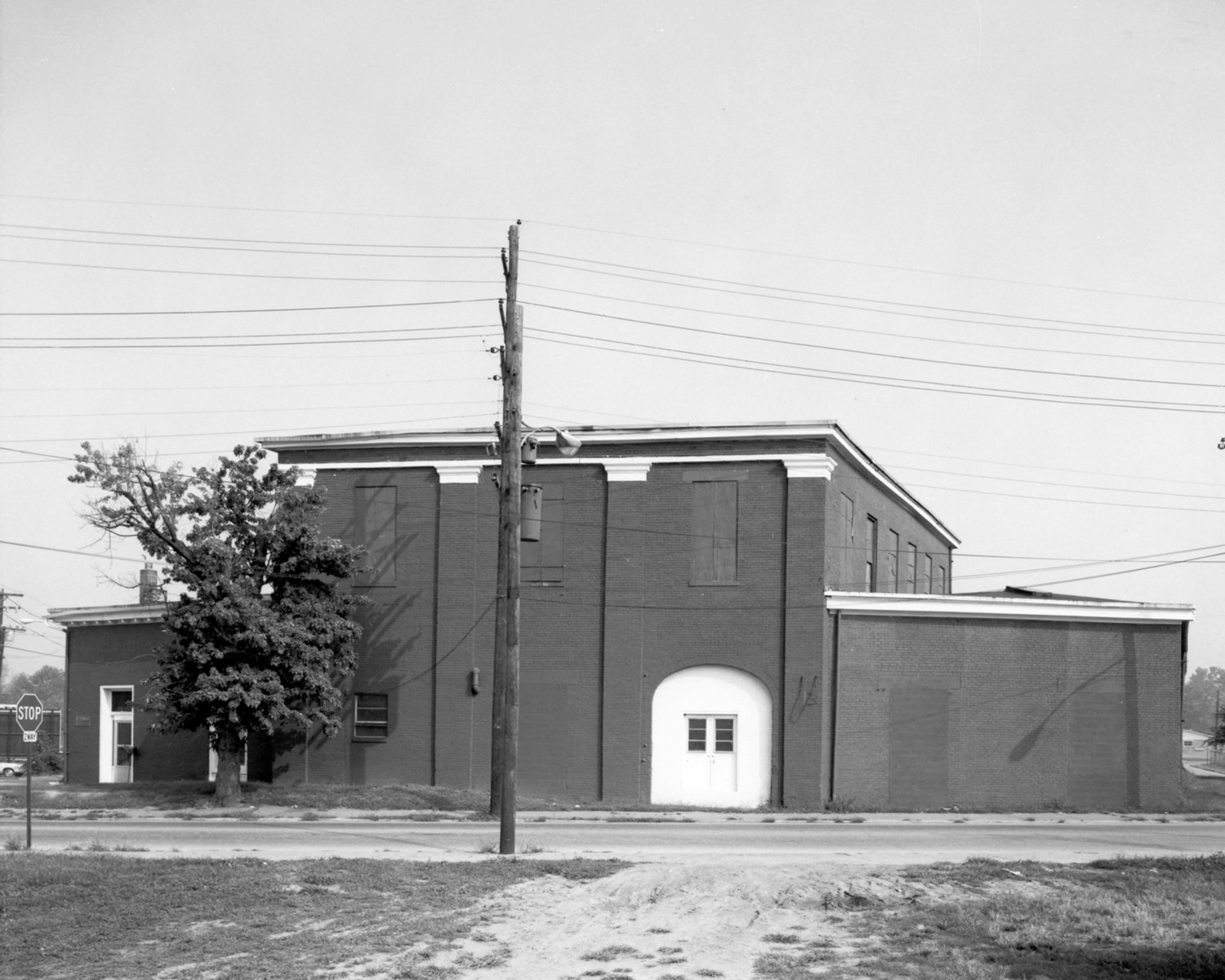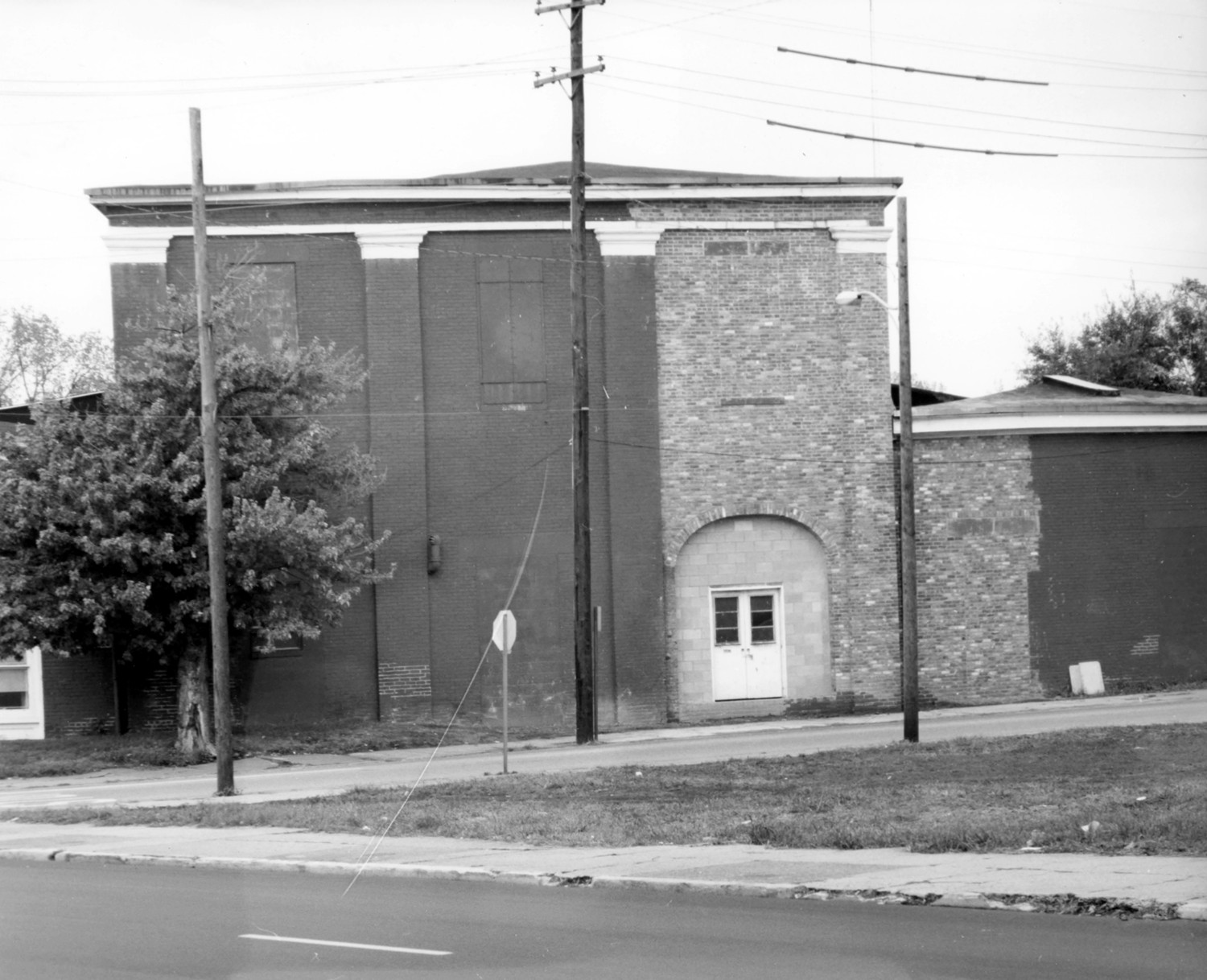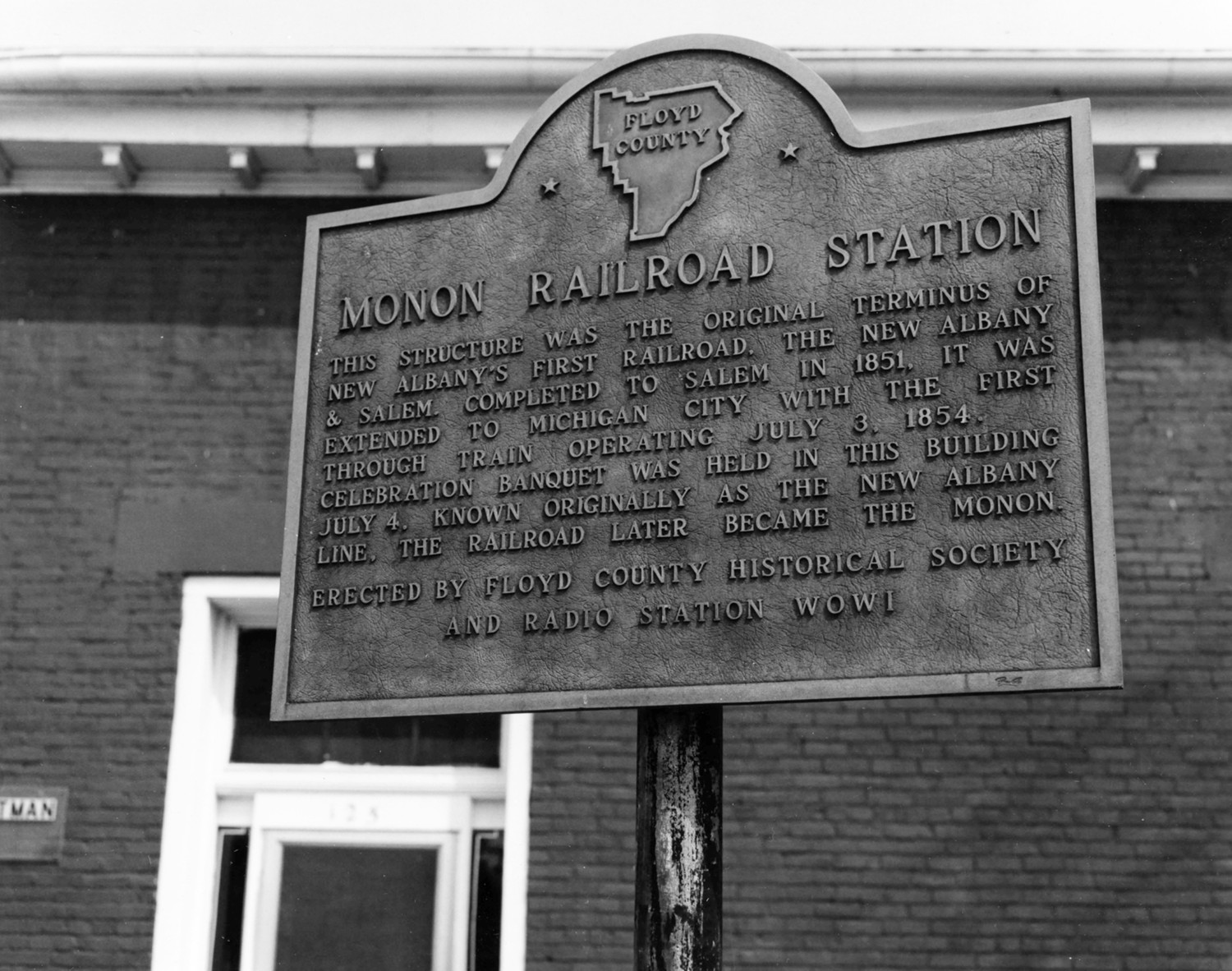Former Louisville and Nashville Train Station was Demolished in 1995
New Albany and Salem Railroad Depot, New Albany Indiana

The New Albany and Salem Railroad was formed in 1847 as an attempt to link the interior of Indiana with the Ohio River transportation system. Like many of the organizers of early railroads, the directors of the N. A. & S. used the concept of a combined river-rail network as their guiding principle. The first section of track was completed on January 14th, 1851, from New Albany on the banks of the Ohio River to Salem, 35 miles north. The concept of a river-rail network quickly faded as the railroad's speed and relative immunity to bad weather became apparent.
Even before the track had reached Salem, the N. A. & S. had altered its charter to allow it to go anywhere in the State. By June 1854, its tracks ran 288 miles from New Albany to Michigan City on the shores of Lake Michigan. During several reorganizations, the N. A. & S first became the Louisville, New Albany and Salem Railroad (1859) and later the Chicago, Indianapolis and Louisville Railway, known later as "The Monon." In 1902, the Louisville and Nashville Railroad and the Southern Railway purchased more than 87% of the company's stock. Thereafter, the "Monon" became a vital link between these two southern railroads and Chicago.
The New Albany Station and Train Shed is the oldest surviving structure from one of the oldest railroads west of the Appalachian Mountains. The New Albany Depot was the most elaborate station on this important early midwestern line.
Building Description
The New Albany terminus of the New Albany & Salem Railroad has a slightly skewed two-story, brick rectangular head house with one-story wings on each side and a long train shed extending from the rear. The front elevation of the head house is divided into three bays by four pilasters, capped with simple limestone capitals supporting a brick entablature with a single course of limestone running continuously across the tops of the capitals. Three iron shuttered windows with plain limestone lintels and sills illuminated the offices on the second floor, while the ground floor openings appear to have been doorways to the ticketing offices, waiting and baggage rooms; they are presently filled in with concrete block. One of the end bays has an arched opening at the ground level which also has been filled in with concrete block and modern double doors. The side elevations of the head house are six bays long with Six windows on the second floor, identical to those on the front.
The one-story wings appear to have been added at a later date, possibly when the train shed was enlarged or rebuilt in the 1890s. According to local records, the structure was adapted for an iron foundry in the last decade of the 19th century.
The shed roof is supported on Howe-type trusses which have been subjected to numerous modifications. The shed cannot be the same age as the station because the detailing of the connections is very crude and more indicative of late 19th-early 20th-century foundry construction, although the station probably did have a shed when first built. Stylistically, the original would have been much more sophisticated in its construction, in keeping with the architectural style of the head house, which can be described as Classic Revival. Together, the head house and train shed cover an area that is approximately 110 feet wide by 300 feet long.
When the railroad bridge was completed across the Ohio River, connecting New Albany with Louisville, Kentucky, in 1886, the railroad moved its corporate headquarters into the Louisville & Nashville Union Depot, relegating the New Albany facility to use as a freight station.
Part of the south wall was rebuilt in the fall of 1983, due to structural failure.
Original materials were re-used, and the upper story window was bricked in.

(1983)

(1983)

(1983)





